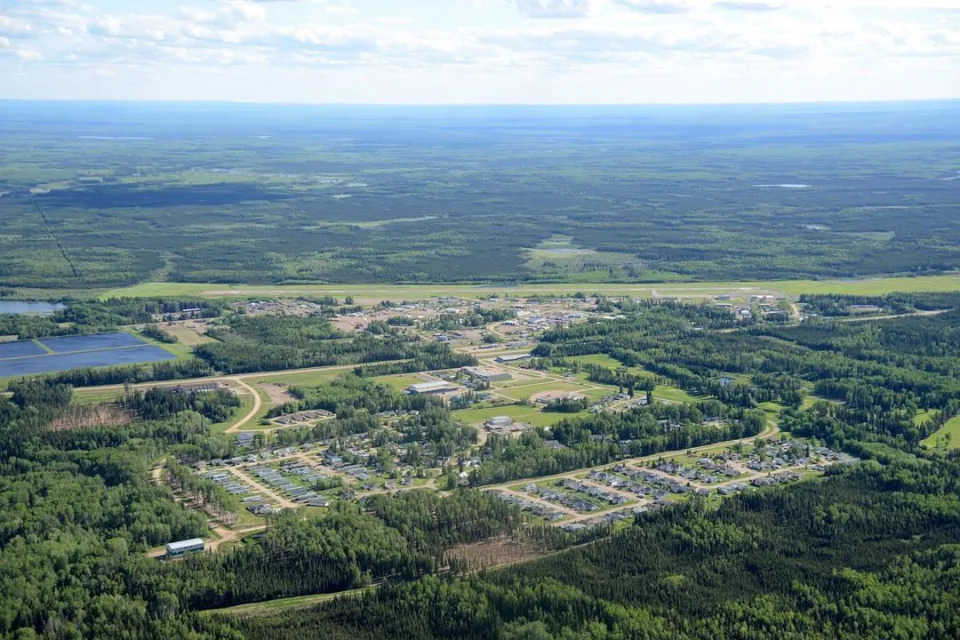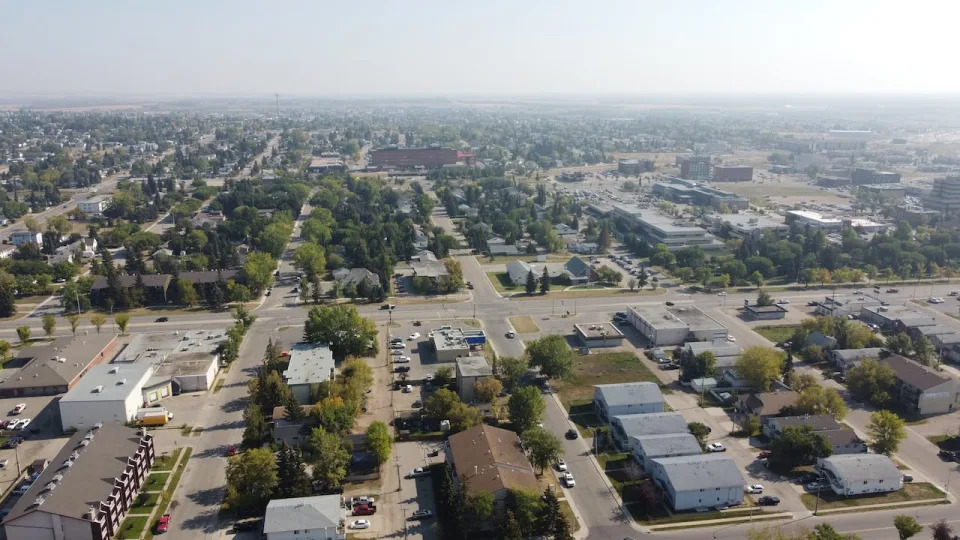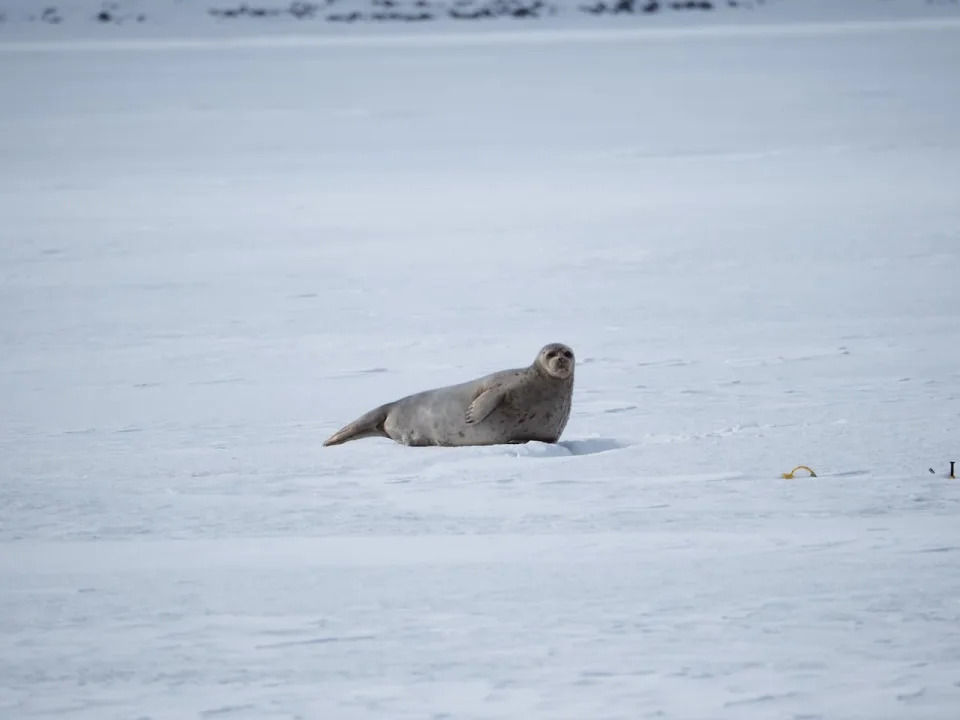Colombia allows Indigenous, minority groups to partner with companies on renewables
Tue, December 26, 2023
By Nelson Bocanegra
BOGOTA (Reuters) - Colombia will allow Indigenous, rural and other minority communities to form renewable energy generator and commercialization projects and develop joint ventures with private companies or the public sector, the energy ministry said.
Leftist President Gustavo Petro has pledged to turn Colombia away from production of oil and coal, and toward renewables like solar and wind, but environmental licensing delays and determined opposition by some Indigenous Wayuu communities in coastal La Guajira province, where many of the projects are planned, have hampered development.
Some 70% of Colombia's energy comes from hydro-electric projects, with less than 1% coming from other renewables. Oil and coal are its top exports.
Groups participating in the projects can generate energy using renewables or renewable fuels, according to a decree signed on Friday but shared by the ministry on Tuesday.
"The energy communities or associations of energy communities can associate with third parties from the public, private or community sector," the decree said.
Eligible groups include rural farmers and Indigenous and Afro-Colombian communities, it added, and communities should first seek to provide for their own energy needs with the projects.
If they generate more than they need for themselves, the groups can supply the national grid or export the power.
More than 50 possible wind and solar projects have been announced in Colombia since 2019, with planned generation of some 2.43 gigawatts in wind energy and 0.1 gigawatts in solar. None are yet operating.
Some companies - including Italy's Enel - have indefinitely delayed projects, blaming local protests for hampering billions in investments.
The country this month launched its first bidding round for offshore wind concessions.
(Reporting by Nelson Bocanegra; Writing by Julia Symmes Cobb and Alistair Bell)
It’s possible that I shall make an ass of myself. But in that case one can always get out of it with a little dialectic. I have, of course, so worded my proposition as to be right either way (K.Marx, Letter to F.Engels on the Indian Mutiny)
Thursday, December 28, 2023
FRACKING BY ANY OTHER NAME
A long-overlooked climate solution, geothermal could be in for its hottest decade yet
The Canadian Press
Wed, December 27, 2023

CALGARY — It's clean, renewable, and right there below our feet, but geothermal energy has largely remained undeveloped in Canada.
However, the climate crisis and the need to reduce reliance on fossil fuels is suddenly driving renewed interest in the high temperatures that occur naturally deep within the earth.
And with technology continuing to advance, proponents hope that — after years of false starts — this could finally be the geothermal industry's decade.
John Redfern, CEO of Calgary-based geothermal company Eavor Technologies Inc., said it has been known for a very long time that Canada is sitting on vast geothermal energy resources.
But unlike Iceland, where geothermal resources account for 30 per cent of electricity production, or California — which has 650 active geothermal wells, accounting for nearly six per cent of the state's electricity production — Canada has lagged behind.
"The principles have been known forever. We know the heat source is down there. We know that every kilometre you go down you get an extra 30 degrees Celsius. It's just a question of going down deep enough and extracting it," Redfern said.
"But there are reasons it didn't take off in the past. So the essential question is, 'Why now? What's changed?'"
This country has not a single commercial geothermal power project in operation, in spite of the fact that there have been fits and starts of interest in geothermal electricity generation as far back as the 1970s. At that time, a global oil crisis was driving interest in alternative forms of energy.
But back then, geothermal could never be proven to make economic sense. Unlike Iceland, whose unique volcanic geology means geothermal resources can be found very close to the surface, in Canada, it can be hugely expensive to drill as deep as is required to reach truly high temperatures.
That's starting to change, as companies develop new technologies that make geothermal production more efficient. Eavor, for example, has developed a proprietary closed-loop system that makes geothermal generation scaleable even in the absence of certain geological features.
Another company, E2E Energy Solutions, focuses on repurposing depleted oil and gas production assets such as existing wellbores, pipelines, and reservoirs. The Calgary-based firm says its technology can be used to upgrade the temperature of saline aquifers to be commercially viable where conventional exploitation methods do not.
E2E recently announced a first-of-its-kind pilot project with the town of Rainbow Lake — population less than 1,000 — in northwest Alberta.
Dan Fletcher, the town's chief administrative officer, said Rainbow Lake aims to become the first municipality in Canada to be fully powered by geothermal energy as early as 2028.
"The Canadian Geothermal Energy Association did a report that identified Rainbow Lake as having this great potential for geothermal," Fletcher said.
"And that kind of caught our interest. You know, we're a historical oil town, but this could be something that could be very different for us — a new economy, effectively."
E2E founder Domenico Daprocida said even with recent technological advances, geothermal remains more expensive than other renewable power solutions such as wind and solar.
But it also has a major advantage over wind and solar, in that it doesn't stop working when the sun isn't shining or the wind stops blowing. A geothermal plant's ability to produce dispatchable, on-demand power — all while occupying a fraction of the land required by a wind or solar farm — is very appealing, he said.
"A geothermal plant is the closest thing you can get to a gas-fired power plant, providing base-load power — but renewable," Daprocida said.
"I think at some point it's going to pass wind and solar here in terms of the number of installed facilities, just because of the limitations of wind and solar."
Canada's first geothermal power facility will likely be one currently being developed in southern Saskatchewan by a privately held company called Deep Corp. The company has raised $27 million in private equity, as well as more than $25 million in government funding, and hopes to have its facility fully commissioned by the end of 2025.
One thing working in the geothermal industry's favour is that the skills, engineering know-how and drilling technology required are virtually the exact same as that used in the oil and gas sector — it just requires deeper drilling, said Deep Corp. president and CEO Kirsten Marcia.
"Here in Saskatchewan, we're surrounded by drilling rigs, we're developing oil and gas resources," Marcia said.
"Well, we drill right past those resources to get to our geothermal resources."
Marcia said she believes geothermal will have a "massive seat at the table" in the future due to its power-generating ability, but also because of its potential to be used to heat homes in Canada's chilly winters.
But while geothermal may be on the cusp of its breakthrough decade, there is a great deal of work still to be done.
"When you think of Iceland or these major geysers in California, those projects were developed early on because they're obvious. You know (the resource) is there." Marcia said.
"But when you're standing out in the middle of a canola field near our project near Estevan, Saskatchewan, the last thing you're thinking of is the geothermal resource beneath your feet," she added.
"For us, we have to drill three-and-a-half kilometres down and then three kilometres horizontally in order to access it. That's not easy. It's very hard, and there's a lot that goes into that."
This report by The Canadian Press was first published Dec. 27, 2023.
Amanda Stephenson, The Canadian Press
A long-overlooked climate solution, geothermal could be in for its hottest decade yet
The Canadian Press
Wed, December 27, 2023

CALGARY — It's clean, renewable, and right there below our feet, but geothermal energy has largely remained undeveloped in Canada.
However, the climate crisis and the need to reduce reliance on fossil fuels is suddenly driving renewed interest in the high temperatures that occur naturally deep within the earth.
And with technology continuing to advance, proponents hope that — after years of false starts — this could finally be the geothermal industry's decade.
John Redfern, CEO of Calgary-based geothermal company Eavor Technologies Inc., said it has been known for a very long time that Canada is sitting on vast geothermal energy resources.
But unlike Iceland, where geothermal resources account for 30 per cent of electricity production, or California — which has 650 active geothermal wells, accounting for nearly six per cent of the state's electricity production — Canada has lagged behind.
"The principles have been known forever. We know the heat source is down there. We know that every kilometre you go down you get an extra 30 degrees Celsius. It's just a question of going down deep enough and extracting it," Redfern said.
"But there are reasons it didn't take off in the past. So the essential question is, 'Why now? What's changed?'"
This country has not a single commercial geothermal power project in operation, in spite of the fact that there have been fits and starts of interest in geothermal electricity generation as far back as the 1970s. At that time, a global oil crisis was driving interest in alternative forms of energy.
But back then, geothermal could never be proven to make economic sense. Unlike Iceland, whose unique volcanic geology means geothermal resources can be found very close to the surface, in Canada, it can be hugely expensive to drill as deep as is required to reach truly high temperatures.
That's starting to change, as companies develop new technologies that make geothermal production more efficient. Eavor, for example, has developed a proprietary closed-loop system that makes geothermal generation scaleable even in the absence of certain geological features.
Another company, E2E Energy Solutions, focuses on repurposing depleted oil and gas production assets such as existing wellbores, pipelines, and reservoirs. The Calgary-based firm says its technology can be used to upgrade the temperature of saline aquifers to be commercially viable where conventional exploitation methods do not.
E2E recently announced a first-of-its-kind pilot project with the town of Rainbow Lake — population less than 1,000 — in northwest Alberta.
Dan Fletcher, the town's chief administrative officer, said Rainbow Lake aims to become the first municipality in Canada to be fully powered by geothermal energy as early as 2028.
"The Canadian Geothermal Energy Association did a report that identified Rainbow Lake as having this great potential for geothermal," Fletcher said.
"And that kind of caught our interest. You know, we're a historical oil town, but this could be something that could be very different for us — a new economy, effectively."
E2E founder Domenico Daprocida said even with recent technological advances, geothermal remains more expensive than other renewable power solutions such as wind and solar.
But it also has a major advantage over wind and solar, in that it doesn't stop working when the sun isn't shining or the wind stops blowing. A geothermal plant's ability to produce dispatchable, on-demand power — all while occupying a fraction of the land required by a wind or solar farm — is very appealing, he said.
"A geothermal plant is the closest thing you can get to a gas-fired power plant, providing base-load power — but renewable," Daprocida said.
"I think at some point it's going to pass wind and solar here in terms of the number of installed facilities, just because of the limitations of wind and solar."
Canada's first geothermal power facility will likely be one currently being developed in southern Saskatchewan by a privately held company called Deep Corp. The company has raised $27 million in private equity, as well as more than $25 million in government funding, and hopes to have its facility fully commissioned by the end of 2025.
One thing working in the geothermal industry's favour is that the skills, engineering know-how and drilling technology required are virtually the exact same as that used in the oil and gas sector — it just requires deeper drilling, said Deep Corp. president and CEO Kirsten Marcia.
"Here in Saskatchewan, we're surrounded by drilling rigs, we're developing oil and gas resources," Marcia said.
"Well, we drill right past those resources to get to our geothermal resources."
Marcia said she believes geothermal will have a "massive seat at the table" in the future due to its power-generating ability, but also because of its potential to be used to heat homes in Canada's chilly winters.
But while geothermal may be on the cusp of its breakthrough decade, there is a great deal of work still to be done.
"When you think of Iceland or these major geysers in California, those projects were developed early on because they're obvious. You know (the resource) is there." Marcia said.
"But when you're standing out in the middle of a canola field near our project near Estevan, Saskatchewan, the last thing you're thinking of is the geothermal resource beneath your feet," she added.
"For us, we have to drill three-and-a-half kilometres down and then three kilometres horizontally in order to access it. That's not easy. It's very hard, and there's a lot that goes into that."
This report by The Canadian Press was first published Dec. 27, 2023.
Amanda Stephenson, The Canadian Press
HINDUTVA IS FEMICIDE
Woman paraded naked: A familiar headline in India
Geeta Pandey - BBC News, Delhi
Tue, December 26, 2023

Incidents similar to the one in Karnataka have made headlines in recent years
Earlier this month, a woman was stripped and paraded naked in India, sparking outrage. It's a depressingly familiar headline, but legal experts and gender rights activists say the law is still not equipped to deal with such heinous crimes against women.
Warning: This article contains details some readers may find distressing.
It was sometime after 1am on 11 December when more than a dozen people barged into Sasikala's [not her real name] house.
The 42-year-old was dragged out, stripped and paraded naked around the village, tied to an electricity pole and beaten for hours.
A resident of Hosa Vantamuri village in Belagavi district in the southern Indian state of Karnataka, she was being punished because her 24-year-old son had eloped with his 18-year-old girlfriend.
The young woman had been betrothed by her family to another man and was to get married the next day. Her furious family wanted to know where the couple were.
The police reached the village around 4am after they received a tip-off and rescued Sasikala and took her to hospital. She's reported to be suffering from severe trauma. Her husband later told a visiting state minister that "my wife and I didn't even know about the relationship".
More than a dozen people have been arrested and a local police officer has been suspended for "dereliction of duty".
The incident made national headlines and authorities took notice. Karnataka Chief Minister Siddaramaiah called it an "inhuman act" and promised justice to her.
The government also gave her some agricultural land and money, although authorities have acknowledged there could be no compensation for the humiliation she endured.
Karnataka high court Chief Justice Prasanna Varale and Justice MGS Kamal, who summoned the police and initiated a hearing on their own, said they were "shocked" that such an incident could take place in modern India.
But the incident in Belagavi is not really rare and several similar incidents have made headlines in India in recent years.

Protests in Delhi after two Kuki tribal women were stripped and paraded naked in Manipur in July 2023
One such story that sparked global outrage came from the north-eastern state of Manipur in July. A viral video showed two women being dragged and groped by a mob of men before one of them was allegedly gang-raped.
The horrific attack had a political angle - Manipur was gripped by violent ethnic clashes involving the Kuki and Meitei communities.
But reports from other states show such incidents are often rooted in caste or familial conflicts, with women's bodies routinely becoming the battleground.
In August, a 20-year-old pregnant woman was paraded naked in Rajasthan by her husband and in-laws after she reportedly left him for another man. A 23-year-old tribal woman in Gujarat was punished in a similar manner for eloping with another man in July 2021.
In May 2015, five Dalit women were paraded naked and caned by members of a higher caste in Uttar Pradesh after one of their girls eloped with a Dalit boy. In 2014, a 45-year-old woman in Rajasthan was paraded naked on a donkey after being accused of killing her nephew.
Outrage after women paraded naked by mob in India
A tiny tool Indian women use to fight sexual harassment
These are just some cases that made headlines, but there's a general lack of data on such incidents. Some cases get politicised, with opposition parties raising them to embarrass a state government. But activists say women often do not report these crimes because of fear of insensitive questioning by the police and in courts.
"Cases involving assault of women are always under-reported because of shame. Families don't come forward because it's a matter of honour and the system does not support the survivors or give them a safe space to report these crimes," says lawyer and rights activist Sukriti Chauhan.
In the National Crime Records Bureau database, disrobing is recorded under a broad description called "assault with intent to outrage [a woman's] modesty", which clubs the crime with cases of street harassment, sexual gestures, voyeurism and stalking. Last year, 83,344 such cases were recorded with 85,300 affected women.
Such cases are dealt with under article 354 of the Indian Penal Code and are punishable by a mere three to seven years in jail - which, Ms Chauhan says, is "grossly inadequate".
"It's a mockery of justice. Law works only when it deters. Right now this law is not a deterrent and that undermines women. It needs to be amended to enhance the punishment," she says.

Activists say cases involving sexual assault of women are always under-reported because of shame
In the Karnataka high court, the justices also noted that the assault in Belagavi was watched by "a crowd of 50-60 villagers", adding that "only one man tried to intervene and he was also beaten up".
Highlighting the need for "collective responsibility" to stop such atrocities, the judges cited a case from the 1830s - when India was governed by the British - pointing out that an entire village was made to pay for a crime.
"All village people should be made responsible... Somebody could have tried to stop that," they said.
Chief Justice Varale also invoked Draupadi from the epic Mahabharat, who's saved by Hindu god Krishna when she's being disrobed, to advise women "to pick up arms as no god will come to protect you".
That advice, Ms Chauhan believes, is not practical.
"We are not Draupadis and there are no weapons to be picked up. Also, the onus cannot be on women. The law has to talk to the wrongdoer, but it's still telling women that they have to find a way to stay safe," she says.
"The message we need to get across is stop fighting your ethnic, caste and family battles on our bodies, they are not your battlefield," she adds.
What do Delhi rape hangings mean for women?
Rising crimes against Indian women in five charts
Maumil Mehraj, a research analyst who works with young people on gender equity, says the reason a woman's body is treated as a battlefield is because it's connected to her - and by extension her family, caste and community's - honour.
"It's always why women disproportionately have to bear the brunt during conflicts," she says.
Such incidents, she says, also have an element of voyeurism because they are seen, photographed and filmed.
In Belagavi, she says, one of those arrested is a minor, indicating that such crimes have been normalised to such an extent that even the next generation has grown up with entrenched gender ideas.
"So will a law be enough to deal with such cases? I think the only solution is bringing up better boys. It's necessary to teach them that connecting a woman's body to her honour is problematic," she says.
"It's a Herculean task, but has to start early. Otherwise this vicious violence against women will continue."
BBC News India is now on YouTube. Click here to subscribe and watch our documentaries, explainers and features.
Woman paraded naked: A familiar headline in India
Geeta Pandey - BBC News, Delhi
Tue, December 26, 2023

Incidents similar to the one in Karnataka have made headlines in recent years
Earlier this month, a woman was stripped and paraded naked in India, sparking outrage. It's a depressingly familiar headline, but legal experts and gender rights activists say the law is still not equipped to deal with such heinous crimes against women.
Warning: This article contains details some readers may find distressing.
It was sometime after 1am on 11 December when more than a dozen people barged into Sasikala's [not her real name] house.
The 42-year-old was dragged out, stripped and paraded naked around the village, tied to an electricity pole and beaten for hours.
A resident of Hosa Vantamuri village in Belagavi district in the southern Indian state of Karnataka, she was being punished because her 24-year-old son had eloped with his 18-year-old girlfriend.
The young woman had been betrothed by her family to another man and was to get married the next day. Her furious family wanted to know where the couple were.
The police reached the village around 4am after they received a tip-off and rescued Sasikala and took her to hospital. She's reported to be suffering from severe trauma. Her husband later told a visiting state minister that "my wife and I didn't even know about the relationship".
More than a dozen people have been arrested and a local police officer has been suspended for "dereliction of duty".
The incident made national headlines and authorities took notice. Karnataka Chief Minister Siddaramaiah called it an "inhuman act" and promised justice to her.
The government also gave her some agricultural land and money, although authorities have acknowledged there could be no compensation for the humiliation she endured.
Karnataka high court Chief Justice Prasanna Varale and Justice MGS Kamal, who summoned the police and initiated a hearing on their own, said they were "shocked" that such an incident could take place in modern India.
But the incident in Belagavi is not really rare and several similar incidents have made headlines in India in recent years.

Protests in Delhi after two Kuki tribal women were stripped and paraded naked in Manipur in July 2023
One such story that sparked global outrage came from the north-eastern state of Manipur in July. A viral video showed two women being dragged and groped by a mob of men before one of them was allegedly gang-raped.
The horrific attack had a political angle - Manipur was gripped by violent ethnic clashes involving the Kuki and Meitei communities.
But reports from other states show such incidents are often rooted in caste or familial conflicts, with women's bodies routinely becoming the battleground.
In August, a 20-year-old pregnant woman was paraded naked in Rajasthan by her husband and in-laws after she reportedly left him for another man. A 23-year-old tribal woman in Gujarat was punished in a similar manner for eloping with another man in July 2021.
In May 2015, five Dalit women were paraded naked and caned by members of a higher caste in Uttar Pradesh after one of their girls eloped with a Dalit boy. In 2014, a 45-year-old woman in Rajasthan was paraded naked on a donkey after being accused of killing her nephew.
Outrage after women paraded naked by mob in India
A tiny tool Indian women use to fight sexual harassment
These are just some cases that made headlines, but there's a general lack of data on such incidents. Some cases get politicised, with opposition parties raising them to embarrass a state government. But activists say women often do not report these crimes because of fear of insensitive questioning by the police and in courts.
"Cases involving assault of women are always under-reported because of shame. Families don't come forward because it's a matter of honour and the system does not support the survivors or give them a safe space to report these crimes," says lawyer and rights activist Sukriti Chauhan.
In the National Crime Records Bureau database, disrobing is recorded under a broad description called "assault with intent to outrage [a woman's] modesty", which clubs the crime with cases of street harassment, sexual gestures, voyeurism and stalking. Last year, 83,344 such cases were recorded with 85,300 affected women.
Such cases are dealt with under article 354 of the Indian Penal Code and are punishable by a mere three to seven years in jail - which, Ms Chauhan says, is "grossly inadequate".
"It's a mockery of justice. Law works only when it deters. Right now this law is not a deterrent and that undermines women. It needs to be amended to enhance the punishment," she says.

Activists say cases involving sexual assault of women are always under-reported because of shame
In the Karnataka high court, the justices also noted that the assault in Belagavi was watched by "a crowd of 50-60 villagers", adding that "only one man tried to intervene and he was also beaten up".
Highlighting the need for "collective responsibility" to stop such atrocities, the judges cited a case from the 1830s - when India was governed by the British - pointing out that an entire village was made to pay for a crime.
"All village people should be made responsible... Somebody could have tried to stop that," they said.
Chief Justice Varale also invoked Draupadi from the epic Mahabharat, who's saved by Hindu god Krishna when she's being disrobed, to advise women "to pick up arms as no god will come to protect you".
That advice, Ms Chauhan believes, is not practical.
"We are not Draupadis and there are no weapons to be picked up. Also, the onus cannot be on women. The law has to talk to the wrongdoer, but it's still telling women that they have to find a way to stay safe," she says.
"The message we need to get across is stop fighting your ethnic, caste and family battles on our bodies, they are not your battlefield," she adds.
What do Delhi rape hangings mean for women?
Rising crimes against Indian women in five charts
Maumil Mehraj, a research analyst who works with young people on gender equity, says the reason a woman's body is treated as a battlefield is because it's connected to her - and by extension her family, caste and community's - honour.
"It's always why women disproportionately have to bear the brunt during conflicts," she says.
Such incidents, she says, also have an element of voyeurism because they are seen, photographed and filmed.
In Belagavi, she says, one of those arrested is a minor, indicating that such crimes have been normalised to such an extent that even the next generation has grown up with entrenched gender ideas.
"So will a law be enough to deal with such cases? I think the only solution is bringing up better boys. It's necessary to teach them that connecting a woman's body to her honour is problematic," she says.
"It's a Herculean task, but has to start early. Otherwise this vicious violence against women will continue."
BBC News India is now on YouTube. Click here to subscribe and watch our documentaries, explainers and features.
A bizarre galaxy NASA spotted at the edge of the universe could upend what we know about supermassive black holes
WAIT, WHAT? THE UNIVERSE HAS AN EDGE?!
Marianne Guenot
Wed, December 27, 2023

A picture taken by JWST and Chandra X-ray observatory shows the location of a UHZ-1 and its black hole near the beginning of the universe.NASA/CXC/SAO/Ákos Bogdán; Infrared: NASA/ESA/CSA/STScI; Image Processing: NASA/CXC/SAO/L. Frattare & K. Arcand
NASA's JWST telescope spotted a bizarre galaxy that defies expectations.
Galaxy UHZ-1 formed around a huge black hole that existed surprisingly soon after the Big Bang.
It formed so early that the main theory for black-hole formation — a dying star — seems not to fit.
A bizarre galaxy spotted in the early days of the universe could rewrite how supermassive black holes are formed.
Scientists have long wondered how supermassive black holes — the enormous, mysterious phenomena at the center of galaxies including our Milky Way — came into existence.
A new observation of Galaxy UHZ-1, collected by NASA using its powerful new James Webb Space Telescope and the Chandra X-ray Observatory, suggests an unusual origin.
Per the agency, it could show that the supermassive black hole there was born directly from clouds of primordial gas.
If confirmed, it would show, for the first time, that supermassive black holes are not always formed by dying stars.
Such a discovery "changes the game in understanding how these objects formed," said study lead author Priyamvada Natarajan while speaking to Science Friday, a non-profit science-education organization.
"It is simply too big too early. It's like looking in at a kindergarten classroom and there among all the 5-year-olds is one that is 150 pounds and/or six feet tall," Daniel Holz, a theorist at the University of Chicago who studies black holes, told The New York Times.
"Priya has found an extremely exciting black hole, if true," he said.
Chandra X-ray Observatory first picked up the black hole by detecting X-rays let off by galaxy UHZ-1.
The black hole inside, the observatory found, was a beast — estimated between 10 million and 100 million times as massive as the sun, per New Scientist.
When JWST set out to figure out where the black hole was located, scientists got a shock: it was inside UHZ-1 about 13.2 billion light years away.
The distance meant that this behemoth existed when the universe was very young, only about 470 million years after the Big Bang. It's the furthest-flung black hole ever recorded.
And that's puzzling. One theory for the formation of supermassive black holes is that they come to be over a long time, The Times reported.
Stars at the beginning of the universe were small: they burned what was available, hydrogen and helium, which means they flamed out quickly, leaving smaller black holes about 10 to 100 times bigger than the sun in their wake, per a press release from NASA.
Over time, per this theory, black holes would merge, eventually forming supermassive black holes.
But UHZ-1 provides "compelling evidence" for another theory, said study author Natarajan, who is a professor of astronomy and physics at Yale.
Per this theory, black holes could be born big from the get-go. This type of galaxy, a big black hole surrounded by a small cloud of gas, could provide a heavy "seed" of a black hole that could grow into a supermassive black hole on its own.
Natarajan and her colleagues have dubbed this type of cluster "overmassive black hole galaxies."
The supermassive black holes, then, wouldn't be born from early stars. The best explanation instead, per Natarajan, is that they came from cosmic gas collapsing in on itself, creating seeds already weighing between about 10,000 and 100,000 suns.
"The fact that these start out in life overmassive implies that they will likely eventually evolve into supermassive black holes," said Natarajan, speaking to The Times.
"Nature does seem to make BH seeds many ways, beyond just stellar death!" she said, per the Times.
To confirm their theory, scientists will need more evidence, said Fabio Pacucci at the Harvard-Smithsonian Center for Astrophysics in Massachusetts, per New Scientist. "If this is at a 100 million solar masses it's pretty big, but if it's at 10 million solar masses it's not that big, so it could have possibly formed from a lighter seed," he said.
"Everything hinges on finding more of these objects, possibly more massive, possibly at even higher distances, to really understand how the first population of black holes formed."
The findings were published in a peer-reviewed study in the journal Nature Astronomy on November 6.
ALBERTA
Grande Prairie could see up to 85,000 jobs in post-pandemic rebound, study suggestsCBC
Sun, December 24, 2023

The report suggests it's easier to retain than attract workers to Grande Prairie, and other areas in northwestern Alberta. (David Bajer/CBC - image credit)
Post-pandemic job recovery is underway for Grande Prairie as the northwestern Alberta region is expected to see more than 85,000 jobs by 2028.
According to a new workforce study by Deloitte, factors such as family-friendliness, K-12 education, job opportunities, and higher wages are attracting people to work and stay in the region.
The report surveyed 465 employees and job seekers in the region, from April to May 2023, and 195 employers from February to March 2023.
A large majority of workers — about 400 — are satisfied with the quality of life in the region, the study says.
The report says job losses during the pandemic are expected to be fully reversed between 2022 and 2028. The total number of jobs is expected to increase by four per cent.
The majority of workers, 92 per cent, reported being satisfied with the region as a place to work. Reasonable commute times, job security, and access to benefits and sick pay all earned high scores among employees and job seekers.
The region's population is younger than Alberta's overall population, with 30 per cent of the northwestern region's residents between 25 and 44 years old. This bodes well for the region's economy, the study notes, as there will not be significant retirements in the near future, provided that young workers stay in the region long-term.
"A younger community can improve innovation, adaptability, diversity, inclusion, and long-term growth," the report states.
Northwestern Alberta looking to attract more workers
Jackie Clayton, mayor of Grande Prairie, said the city is prioritizing areas things like childcare and public transportation to enhance the convenience for workers and residents.
"When kids are happy, parents are happy," Clayton said. "Looking into all those little items that have an impact in people's overall quality of life has been a priority, while also being very strategic in where the opportunities for growth are in our region."
In the report, employers noted that it's easier to retain workers rather than attract workers to the region.
"Unless you've been here, it's really hard to understand what we have to offer," said Tanya Oliver, CEO of Grande Prairie & District Chamber of Commerce.
"We have city amenities, we have small town amenities, we have rural life. We have a wide variety of opportunities here for different styles of life," she said.
"But it's hard to communicate that properly out to the masses."
The chamber of commerce is now working on developing tools employers will be able to use in their recruitment and talent attraction efforts using data in the report, Oliver said.
Northwestern Polytechnic looking at program offerings
The report found that access to appropriate work-related training is one of the top priorities for employees working in the region.
Institutions like Northwestern Polytechnic seek to meet that demand — by updating their course offerings using input from industry partners, said Vanessa Sheane, the Polytechnic's president & CEO.
The Polytechnic also looks at the labour market in the region when making program development decisions, she said.
If there's a sustained need, she said, the school may consider developing a for-credit program that would count toward a certificate, a diploma, or a degree.
"We really are open to and exploration of any type of programming that is needed in the region," Sheane said.
'Like being at a loud rock concert': study looks at how ship noise affects Arctic marine mammals
CBC
Tue, December 26, 2023

A ringed seal on sea ice near Ulukhaktok. (Submitted by William Halliday - image credit)
A research study is painting a fuller picture of how ship noise affects Arctic marine mammals in the eastern Beaufort Sea.
"Whales are swimming faster when ships are close by ... and we're finding changes in the sound that they're making in their vocalizations," said William Halliday, the lead researcher for the study.
He said the study found whales vocalize less when there's more ship noise.
Ships have propellers that create bubbles that explode and create noise.
Underwater noise can have negative consequences for animals, and can affect their ability to hear and communicate with each other.
"It can cause them to stop foraging or to leave an area, to maybe even change their migration route," he said, adding if noise levels are high enough, it can affect the animal's hearing as well.
More ships, more noise
The number of ships in the Arctic have increased over the past 20 years, and are expected to continue increasing in the future.
The study, which began in 2014, aims to examine how ships are affecting animals and establish a baseline of underwater noise levels right now, to help track how underwater noise levels are changing over time as more ships pass through the area.

A map of where the underwater recorders were placed, marked with yellow pinpoints. (submitted by William Halliday)
Researchers placed underwater microphones to record sound in the eastern Beaufort Sea and Amundsen Gulf.
Halliday said it's important to do this type of research because there's a knowledge gap and more research needs to be done to fully understand how underwater noise is affecting Arctic marine mammals, some of which have experienced a decrease in their population.
He said it's also important because it affects local people who depend on those animals.
David Kuptana, an elder and hunter in Ulukhaktok who hunts animals like belugas and seals, said he's noticed ships are causing animals in the area to move away.
He said that makes it difficult for hunters who rely on the animals as a source of food and income.
"If more ships are going to keep coming, then they are going to be scaring all the animals away from this area," he said.

David Kuptana, who hunts seals and belugas, said ships are having an effect on them. (Submitted by David Kuptana)
He said in the future, if there are more ships in the area, hunters would have to travel farther away to go hunting — which costs more and uses more gas.
"It's going to affect us a lot," he said.
A look at sound levels
Some people might think it's quieter underneath water — but there is plenty of noise. A dominant sound underwater is waves crashing at the surface. There are also the sounds of raindrops falling, sea ice cracking and glaciers melting.
Halliday said sound levels under solid sea ice in the winter are typically at 80 or 85 decibels.
In the summer, on a calm day, it could be around 90 decibels — and on a really windy day it could be up to around 110 decibels.
When a loud ship is two or three kilometres away, that rises to 120 decibels.
"That kind of distant ship is like being at a loud rock concert," said Halliday.
When the ship passes right over the underwater microphone, it can be as loud as 140 or 150 decibels, which is like a jet going over your head.
The project is still ongoing at the moment, and Halliday said it will take several years before it's completed.
CBC
Tue, December 26, 2023

A ringed seal on sea ice near Ulukhaktok. (Submitted by William Halliday - image credit)
A research study is painting a fuller picture of how ship noise affects Arctic marine mammals in the eastern Beaufort Sea.
"Whales are swimming faster when ships are close by ... and we're finding changes in the sound that they're making in their vocalizations," said William Halliday, the lead researcher for the study.
He said the study found whales vocalize less when there's more ship noise.
Ships have propellers that create bubbles that explode and create noise.
Underwater noise can have negative consequences for animals, and can affect their ability to hear and communicate with each other.
"It can cause them to stop foraging or to leave an area, to maybe even change their migration route," he said, adding if noise levels are high enough, it can affect the animal's hearing as well.
More ships, more noise
The number of ships in the Arctic have increased over the past 20 years, and are expected to continue increasing in the future.
The study, which began in 2014, aims to examine how ships are affecting animals and establish a baseline of underwater noise levels right now, to help track how underwater noise levels are changing over time as more ships pass through the area.

A map of where the underwater recorders were placed, marked with yellow pinpoints. (submitted by William Halliday)
Researchers placed underwater microphones to record sound in the eastern Beaufort Sea and Amundsen Gulf.
Halliday said it's important to do this type of research because there's a knowledge gap and more research needs to be done to fully understand how underwater noise is affecting Arctic marine mammals, some of which have experienced a decrease in their population.
He said it's also important because it affects local people who depend on those animals.
David Kuptana, an elder and hunter in Ulukhaktok who hunts animals like belugas and seals, said he's noticed ships are causing animals in the area to move away.
He said that makes it difficult for hunters who rely on the animals as a source of food and income.
"If more ships are going to keep coming, then they are going to be scaring all the animals away from this area," he said.

David Kuptana, who hunts seals and belugas, said ships are having an effect on them. (Submitted by David Kuptana)
He said in the future, if there are more ships in the area, hunters would have to travel farther away to go hunting — which costs more and uses more gas.
"It's going to affect us a lot," he said.
A look at sound levels
Some people might think it's quieter underneath water — but there is plenty of noise. A dominant sound underwater is waves crashing at the surface. There are also the sounds of raindrops falling, sea ice cracking and glaciers melting.
Halliday said sound levels under solid sea ice in the winter are typically at 80 or 85 decibels.
In the summer, on a calm day, it could be around 90 decibels — and on a really windy day it could be up to around 110 decibels.
When a loud ship is two or three kilometres away, that rises to 120 decibels.
"That kind of distant ship is like being at a loud rock concert," said Halliday.
When the ship passes right over the underwater microphone, it can be as loud as 140 or 150 decibels, which is like a jet going over your head.
The project is still ongoing at the moment, and Halliday said it will take several years before it's completed.
Edmonton comic creator makes the CBC Books list for Best Canadian Comics of 2023
CBC
Mon, December 25, 2023

Bad Medicine is the first graphic novel by Edmonton-based author Christopher Twin. (Emanata, Christopher Twin - image credit)
An Edmonton-based comic creator has made the shortlist for the best Canadian comics of 2023 by CBC Books.
Christopher Twin is originally from Swan River First Nations reservation in northern Alberta, located 240 kilometres northwest of Edmonton, and made the cut with his graphic novel Bad Medicine.
Twin was inspired by Cree folklore and modern Cree life. His book follows a group of teens swapping scary stories around a campfire.
Twin told CBC's Edmonton AM, one character in the book tells a story about little people who live near the river and play tricks on people passing by.
"Another kid tells a story about a girl that gets abducted and [has to] fight for yourself," Twin said.
Twin said the characters in the book begin an impromptu storytelling competition, with each character trying to one-up the others by telling a better story.
Inspiration from Indigenous tales
He said he knew he wanted to illustrate and write a short story anthology for his first book and describes his book as "Indigenous tales from the crypt sort of horror anthology".
Some of the stories in the book are ones Twin heard growing up, and others he found during his research before writing.
"But I also incorporated stories from actual people that I talked to," he said.
"I wanted to write about something close to home and something for people on reservations."
Twin said he's always been drawn to graphic novels and would try to copy them and make his own when he was younger.
"I came back to it later in life and really thought if I was ever going to make a push for it, I might as well do it now," he said.
Twin said he was inspired by Japanese horror manga artist Junji Ito for his art, which he said is a hybrid style of American-style comics and Japanese-style manga.
The book has also made the long list for Canada Reads 2024.
Bad Medicine was released in October of this year and so far, Twin said the reactions have been positive and have fuelled his confidence to work on another book.
He also heard a positive response from the Indigenous community.
"They all loved seeing something they know represented, in the point of view of someone that grew up around them," he said.
Twin said he wanted to convey the Indigenous communities' tradition of oral storytelling that always ends in a lesson.
He said his next book, which falls in the sci-fi genre, will also pull on his Indigenous roots.
CBC
Mon, December 25, 2023

Bad Medicine is the first graphic novel by Edmonton-based author Christopher Twin. (Emanata, Christopher Twin - image credit)
An Edmonton-based comic creator has made the shortlist for the best Canadian comics of 2023 by CBC Books.
Christopher Twin is originally from Swan River First Nations reservation in northern Alberta, located 240 kilometres northwest of Edmonton, and made the cut with his graphic novel Bad Medicine.
Twin was inspired by Cree folklore and modern Cree life. His book follows a group of teens swapping scary stories around a campfire.
Twin told CBC's Edmonton AM, one character in the book tells a story about little people who live near the river and play tricks on people passing by.
"Another kid tells a story about a girl that gets abducted and [has to] fight for yourself," Twin said.
Twin said the characters in the book begin an impromptu storytelling competition, with each character trying to one-up the others by telling a better story.
Inspiration from Indigenous tales
He said he knew he wanted to illustrate and write a short story anthology for his first book and describes his book as "Indigenous tales from the crypt sort of horror anthology".
Some of the stories in the book are ones Twin heard growing up, and others he found during his research before writing.
"But I also incorporated stories from actual people that I talked to," he said.
"I wanted to write about something close to home and something for people on reservations."
Twin said he's always been drawn to graphic novels and would try to copy them and make his own when he was younger.
"I came back to it later in life and really thought if I was ever going to make a push for it, I might as well do it now," he said.
Twin said he was inspired by Japanese horror manga artist Junji Ito for his art, which he said is a hybrid style of American-style comics and Japanese-style manga.
The book has also made the long list for Canada Reads 2024.
Bad Medicine was released in October of this year and so far, Twin said the reactions have been positive and have fuelled his confidence to work on another book.
He also heard a positive response from the Indigenous community.
"They all loved seeing something they know represented, in the point of view of someone that grew up around them," he said.
Twin said he wanted to convey the Indigenous communities' tradition of oral storytelling that always ends in a lesson.
He said his next book, which falls in the sci-fi genre, will also pull on his Indigenous roots.
These musicians recorded a Christmas album with a Haida twist
CBC
Sun, December 24, 2023

Terri-Lynn and sGannaGwa created a limited-edition Christmas album in the Haida language. (Farah Nosh - image credit)
A new limited-edition Christmas album with an Indigenous twist aims to introduce reconciliation to the holidays.
Terri-Lynn and sGaanaGwa recently released Haida Solstice, which reimagines Christmas classics through the lens of Haida culture.
"Christmas has come to symbolize everything that is commercial and capitalism, and I resisted it," said Terri-Lynn Williams-Davidson, lead singer and also a producer on the album, who says the project was requested by elders from the Skidegate Haida Immersion Program (SHIP).
"[But with the elders' persistence,] I thought this could be an opportunity to decolonize Christmas and add Haida world views and the Haida language."
From the artwork to the use of Xaayda Kil, the Haida language, to the Haida-centred interpretation of the original lyrics, Williams-Davidson says every aspect of the record features the coastal Indigenous culture.
She hopes the process of decolonizing Christmas traditions through music will engage more people to learn about the Haida way of life.
"For us, everything we do together is on the ground steps of reconciliation and learning more about each other and learning more about Haida culture," Williams-Davidson told CBC's Margaret Gallagher on North by Northwest.
Translation challenges
Williams-Davidson credits the translations on the album to elders with SHIP, an initiative focused on preserving and revitalizing the Haida language.
"It takes them a very long time to translate. There are very few fluent speakers, less than 20 in the whole world," she said.
Haida Solstice showcases a variety of changes to Christmas classics, including lyrics in Silver Bells being changed from "it's Christmas time in the city" to specific locations in the Haida Nation, such as Skidegate and Masset.
The differences between English and Xaayda Kil created some challenges, Williams-Davidson said, explaining that Little Drummer Boy, for example, went through many changes because Xaayda Kil doesn't have male or female pronouns.

The album's songs were translated by elders in the Skidegate Haida Immersion Program, who are dedicated to preserving the Indigenous language.
CBC
Sun, December 24, 2023

Terri-Lynn and sGannaGwa created a limited-edition Christmas album in the Haida language. (Farah Nosh - image credit)
A new limited-edition Christmas album with an Indigenous twist aims to introduce reconciliation to the holidays.
Terri-Lynn and sGaanaGwa recently released Haida Solstice, which reimagines Christmas classics through the lens of Haida culture.
"Christmas has come to symbolize everything that is commercial and capitalism, and I resisted it," said Terri-Lynn Williams-Davidson, lead singer and also a producer on the album, who says the project was requested by elders from the Skidegate Haida Immersion Program (SHIP).
"[But with the elders' persistence,] I thought this could be an opportunity to decolonize Christmas and add Haida world views and the Haida language."
From the artwork to the use of Xaayda Kil, the Haida language, to the Haida-centred interpretation of the original lyrics, Williams-Davidson says every aspect of the record features the coastal Indigenous culture.
She hopes the process of decolonizing Christmas traditions through music will engage more people to learn about the Haida way of life.
"For us, everything we do together is on the ground steps of reconciliation and learning more about each other and learning more about Haida culture," Williams-Davidson told CBC's Margaret Gallagher on North by Northwest.
Translation challenges
Williams-Davidson credits the translations on the album to elders with SHIP, an initiative focused on preserving and revitalizing the Haida language.
"It takes them a very long time to translate. There are very few fluent speakers, less than 20 in the whole world," she said.
Haida Solstice showcases a variety of changes to Christmas classics, including lyrics in Silver Bells being changed from "it's Christmas time in the city" to specific locations in the Haida Nation, such as Skidegate and Masset.
The differences between English and Xaayda Kil created some challenges, Williams-Davidson said, explaining that Little Drummer Boy, for example, went through many changes because Xaayda Kil doesn't have male or female pronouns.

The album's songs were translated by elders in the Skidegate Haida Immersion Program, who are dedicated to preserving the Indigenous language.
(Skidegate Haida Immersion Program)
"We as a translator didn't say boy anywhere, and so we called [the song] Drummer," she said.
With translations in the works for other songs, Terri-Lynn and sGaanaGwa — who say they're inspired by jazz, blues, folk and rock — aim to record a full album for Christmas next year.
Meaningful concerts
Producer Bill Henderson said sGannaGwa first started when he and Williams-Davidson began performing together in the 1960s, with producer Claire Lawrence completing the co-founding trio.
Over time, musicians Jodie Proznick and Geoff Hicks, along with Bill's daughters Saffron and Camille Henderson on vocals, were enlisted to create the group as it is today.

The Haida Solstice album by Terri-Lynn and sGaanaGwa features art and the Haida language on its CD and liner notes. The CD artwork is by Haida artist Robert Davidson. (Arrthy Thayaparan/CBC)
Henderson said Haida Solstice offered him an additional challenge as he took on the task of singing in Haida for one of the songs.
"You've got to be really careful … because if you don't do it right then … it means something quite different," he said.
Lawrence said the biggest challenge of Haida Solstice was adapting the Christmas classics.
"[To] try to adapt them, add the Haida language and then to perform them in a way that other people don't … it was quite daunting," he said.
Williams-Davidson says she dreamed of singing at Carnegie Hall while growing up, but that aspiration has changed after sGannaGwa's recent December performances in Skidegate and Masset that featured songs from Haida Solstice.
"We wanted to present it to the elders who did the translations and to our two communities … It really was incredible," she said.
"After those concerts, I thought there's no greater meaning than performing right in the community with the elders."
"We as a translator didn't say boy anywhere, and so we called [the song] Drummer," she said.
With translations in the works for other songs, Terri-Lynn and sGaanaGwa — who say they're inspired by jazz, blues, folk and rock — aim to record a full album for Christmas next year.
Meaningful concerts
Producer Bill Henderson said sGannaGwa first started when he and Williams-Davidson began performing together in the 1960s, with producer Claire Lawrence completing the co-founding trio.
Over time, musicians Jodie Proznick and Geoff Hicks, along with Bill's daughters Saffron and Camille Henderson on vocals, were enlisted to create the group as it is today.

The Haida Solstice album by Terri-Lynn and sGaanaGwa features art and the Haida language on its CD and liner notes. The CD artwork is by Haida artist Robert Davidson. (Arrthy Thayaparan/CBC)
Henderson said Haida Solstice offered him an additional challenge as he took on the task of singing in Haida for one of the songs.
"You've got to be really careful … because if you don't do it right then … it means something quite different," he said.
Lawrence said the biggest challenge of Haida Solstice was adapting the Christmas classics.
"[To] try to adapt them, add the Haida language and then to perform them in a way that other people don't … it was quite daunting," he said.
Williams-Davidson says she dreamed of singing at Carnegie Hall while growing up, but that aspiration has changed after sGannaGwa's recent December performances in Skidegate and Masset that featured songs from Haida Solstice.
"We wanted to present it to the elders who did the translations and to our two communities … It really was incredible," she said.
"After those concerts, I thought there's no greater meaning than performing right in the community with the elders."
80 years ago, N.B. regiment took time to celebrate Christmas during the Italian Campaign
CBC
Sun, December 24, 2023

Norman MacNeill, left, and Romeo Hebert were killed on Christmas Day.

A page from the war diary of the Carleton and York Regiment.

Infantrymen of the Carleton and York Regiment prepare to lob a hand grenade into a sniper's hideout in Campochiaro, Italy, on Oct. 23, 1943.
CBC
Sun, December 24, 2023

Norman MacNeill, left, and Romeo Hebert were killed on Christmas Day.
(New Brunswick Military History Museum - image credit)
Even amid some of the heaviest fighting of the Italian Campaign 80 years ago, a New Brunswick regiment celebrated Christmas.
In December 1943, members of the Carleton and York Regiment, a regiment of about 800 soldiers, were stationed near Ortona. Many of the soldiers were from New Brunswick.
In mid-December, they took part in a famous battle known as The Gully.
It was a large fortified ravine, says David Hughes, the executive director of the New Brunswick Military History Museum.
"The Carleton and York took a lot of casualties there," Hughes says. He said it was the first battle the regiment had faced to produce heavy casualties.
War diary notes Christmas celebration
On Christmas Day, some Canadian troops were fighting to take the town of Ortona, a rubble-filled town where the Germans purposely blew up buildings and set booby traps to stop the Allied advance.
Nearby, the Carleton and York Regiment was stationed, taking time for Christmas. Preparations for the holiday were noted in the regiment's war diary.
Even amid some of the heaviest fighting of the Italian Campaign 80 years ago, a New Brunswick regiment celebrated Christmas.
In December 1943, members of the Carleton and York Regiment, a regiment of about 800 soldiers, were stationed near Ortona. Many of the soldiers were from New Brunswick.
In mid-December, they took part in a famous battle known as The Gully.
It was a large fortified ravine, says David Hughes, the executive director of the New Brunswick Military History Museum.
"The Carleton and York took a lot of casualties there," Hughes says. He said it was the first battle the regiment had faced to produce heavy casualties.
War diary notes Christmas celebration
On Christmas Day, some Canadian troops were fighting to take the town of Ortona, a rubble-filled town where the Germans purposely blew up buildings and set booby traps to stop the Allied advance.
Nearby, the Carleton and York Regiment was stationed, taking time for Christmas. Preparations for the holiday were noted in the regiment's war diary.

A page from the war diary of the Carleton and York Regiment.
(New Brunswick Military History Museum)
On Dec. 24, 1943, the diary notes the arrival of beer and spirits. On Dec. 25, the diary includes mention of Christmas dinner.
"Special Christmas rations including turkey, pork, fruit pudding, oranges, nuts, sweets and beer were issued," it says. The diary also notes a large number of letters arriving on Christmas Day.
Combat did not stop for the holiday
Hughes says tradition called for the officers to serve the soldiers on Christmas Day.
Lt. Lorne B. Groom, a New Brunswicker, was doing just that when he was injured.
"Lt. Groom was in the process of serving soldiers their Christmas dinner," says Hughes, "going from trench to trench giving them their … Christmas ration and having a few words with each one of them as they went around.
On Dec. 24, 1943, the diary notes the arrival of beer and spirits. On Dec. 25, the diary includes mention of Christmas dinner.
"Special Christmas rations including turkey, pork, fruit pudding, oranges, nuts, sweets and beer were issued," it says. The diary also notes a large number of letters arriving on Christmas Day.
Combat did not stop for the holiday
Hughes says tradition called for the officers to serve the soldiers on Christmas Day.
Lt. Lorne B. Groom, a New Brunswicker, was doing just that when he was injured.
"Lt. Groom was in the process of serving soldiers their Christmas dinner," says Hughes, "going from trench to trench giving them their … Christmas ration and having a few words with each one of them as they went around.

Infantrymen of the Carleton and York Regiment prepare to lob a hand grenade into a sniper's hideout in Campochiaro, Italy, on Oct. 23, 1943.
(Lieut. Alexander M. Stirton/Canada. Dept. of National Defence/Library and Archives Canada/PA-136198)
"A shell landed very close to Groom as he was doing this and unfortunately he got both of his legs blown off."
Groom survived and eventually returned to New Brunswick, where he became an eye doctor.
However, two other New Brunswick soldiers were not as fortunate. The war diary marks the death of Lt. Norman MacNeill, who grew up in Sussex. Hughes says 23-year-old Romeo Hebert of Saint-Simon was also killed on Christmas Day.
Hughes says the families of these soldiers would not have found out about the deaths until several weeks after Christmas. MacNeill's death was noted in the local paper in mid-January.
Hughes says it's important to remember the men who gave their lives on Christmas Day.
"They were just like you and me," he says. "They were far from home on Christmas Day and many of them never made it back."
"A shell landed very close to Groom as he was doing this and unfortunately he got both of his legs blown off."
Groom survived and eventually returned to New Brunswick, where he became an eye doctor.
However, two other New Brunswick soldiers were not as fortunate. The war diary marks the death of Lt. Norman MacNeill, who grew up in Sussex. Hughes says 23-year-old Romeo Hebert of Saint-Simon was also killed on Christmas Day.
Hughes says the families of these soldiers would not have found out about the deaths until several weeks after Christmas. MacNeill's death was noted in the local paper in mid-January.
Hughes says it's important to remember the men who gave their lives on Christmas Day.
"They were just like you and me," he says. "They were far from home on Christmas Day and many of them never made it back."
PREMIER SMITH BLEW UP AHS
Emergency services in northern Alberta village disrupted by lack of available doctors
CBC
Sun, December 24, 2023

The Boyle Healthcare Centre emergency department is facing a shortage of doctors who can’t work over the holidays. (Jeff McIntosh/The Canadian Press - image credit)
A lack of available doctors and the inability to secure coverage are causing temporary disruptions at an emergency department in a northern Alberta village and surrounding communities over the Christmas holidays.
Residents in the village of Boyle, Alta., located in Athabasca County, approximately 163 kilometres north of Edmonton, will have to travel to surrounding communities for emergency medical services because Boyle Healthcare Centre Emergency Department is facing a shortage of doctors who can't work over the holidays.
The emergency department will be without a doctor from Dec. 23 to Dec. 26, as well as Dec. 28 from 9 a.m. to 8 p.m., according to a press release from Alberta Health Services on Friday.
Harold Nikipelo, an Athabasca County resident and former paramedic in Boyle, said shutting down emergency services is unacceptable.
The responsibility is on the AHS and the provincial government to make sure emergency departments are staffed with doctors at all times, he says.
"I think a big responsibility needs to come back to the physicians that made the commitment to provide these services," Nikipelo said in an interview Sunday.
"If you and I are planning on taking a holiday, we make sure that our jobs are covered or we don't plan our holiday."
Nursing staff available
In the meantime, AHS says nursing staff will be available to triage and assess patients in the emergency department. EMS services remain available to community members, and will transport patients to alternate emergency departments if the need arises.
The disruption from the lack of coverage for doctors isn't the first for Boyle residents.
Most recently, on Sept. 28., AHS announced due to a lack of physician availability and inability to secure locum (temporary substitute) coverage, the Boyle Healthcare Centre emergency department would be operating without doctors.
Warren Griffin, chief administrative officer for the village of Boyle, said the lack of doctors is going to affect people's decision on whether or not they need to go to the hospital.
"Hopefully, if people need medical help they'll get to the hospital or call 911, that's why we have an ambulance service," Griffin said.
"The system is strained and Boyle isn't the only location in Alberta that's experiencing these hardships."
Recruitment to rural areas
In the statement, AHS says it continues to aggressively recruit healthcare workers for rural areas.
Incentive programs such as the Alberta Rural Health Professions Action Plan is aimed to recruit medical workers and support current rural practitioners.
According to Griffin, the village of Boyle is expected to welcome two international nurses to the hospital. With one nurse already working, the second nurse is expected to arrive next week.
"Within the next month, we can hopefully start running our hospital full-time again. And with a full-time running hospital, it does make it more attractive for locum doctors to come and work here," he said.
AHS is asking patients in the region to call 911 if they have a medical emergency.
Emergency services in northern Alberta village disrupted by lack of available doctors
CBC
Sun, December 24, 2023

The Boyle Healthcare Centre emergency department is facing a shortage of doctors who can’t work over the holidays. (Jeff McIntosh/The Canadian Press - image credit)
A lack of available doctors and the inability to secure coverage are causing temporary disruptions at an emergency department in a northern Alberta village and surrounding communities over the Christmas holidays.
Residents in the village of Boyle, Alta., located in Athabasca County, approximately 163 kilometres north of Edmonton, will have to travel to surrounding communities for emergency medical services because Boyle Healthcare Centre Emergency Department is facing a shortage of doctors who can't work over the holidays.
The emergency department will be without a doctor from Dec. 23 to Dec. 26, as well as Dec. 28 from 9 a.m. to 8 p.m., according to a press release from Alberta Health Services on Friday.
Harold Nikipelo, an Athabasca County resident and former paramedic in Boyle, said shutting down emergency services is unacceptable.
The responsibility is on the AHS and the provincial government to make sure emergency departments are staffed with doctors at all times, he says.
"I think a big responsibility needs to come back to the physicians that made the commitment to provide these services," Nikipelo said in an interview Sunday.
"If you and I are planning on taking a holiday, we make sure that our jobs are covered or we don't plan our holiday."
Nursing staff available
In the meantime, AHS says nursing staff will be available to triage and assess patients in the emergency department. EMS services remain available to community members, and will transport patients to alternate emergency departments if the need arises.
The disruption from the lack of coverage for doctors isn't the first for Boyle residents.
Most recently, on Sept. 28., AHS announced due to a lack of physician availability and inability to secure locum (temporary substitute) coverage, the Boyle Healthcare Centre emergency department would be operating without doctors.
Warren Griffin, chief administrative officer for the village of Boyle, said the lack of doctors is going to affect people's decision on whether or not they need to go to the hospital.
"Hopefully, if people need medical help they'll get to the hospital or call 911, that's why we have an ambulance service," Griffin said.
"The system is strained and Boyle isn't the only location in Alberta that's experiencing these hardships."
Recruitment to rural areas
In the statement, AHS says it continues to aggressively recruit healthcare workers for rural areas.
Incentive programs such as the Alberta Rural Health Professions Action Plan is aimed to recruit medical workers and support current rural practitioners.
According to Griffin, the village of Boyle is expected to welcome two international nurses to the hospital. With one nurse already working, the second nurse is expected to arrive next week.
"Within the next month, we can hopefully start running our hospital full-time again. And with a full-time running hospital, it does make it more attractive for locum doctors to come and work here," he said.
AHS is asking patients in the region to call 911 if they have a medical emergency.
Subscribe to:
Posts (Atom)